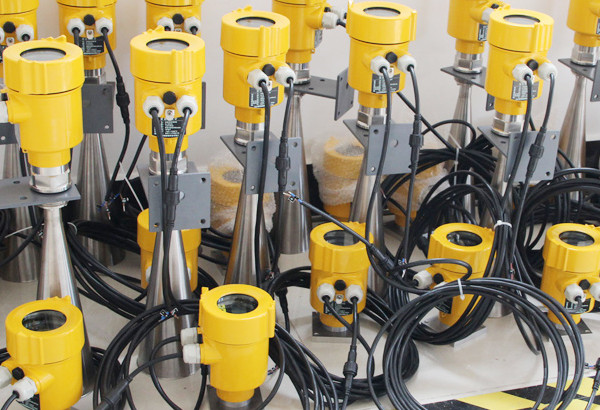With the advancement of industrial automation and intelligence, non-contact measurement technologies have become increasingly prominent in addressing challenges posed by complex industrial environments. Among these technologies, radar level meters stand out due to their high efficiency, precision, and reliability, becoming the mainstream choice for level measurement. This article explores the application of radar level meters in gypsum silo measurement and delves into the unique challenges posed by gypsum silos.
Characteristics of Gypsum Silos
The measurement of material levels in gypsum silos involves several unique challenges. These include:
High Dust Levels
Gypsum production generates significant amounts of dust. This dust not only affects the accuracy of measurement equipment but also contributes to wear and tear, reducing the lifespan of the equipment.High Humidity
Gypsum’s hygroscopic nature leads to elevated humidity levels within the silo. Such an environment can cause measurement devices to malfunction or degrade over time due to moisture ingress.Complex Material Pile Shapes
The shape of gypsum piles in silos can vary significantly depending on the feeding method and material flow characteristics. This irregularity adds complexity to accurate level measurement.Temperature Variations
Temperature within a gypsum silo can fluctuate due to the production process. These changes may impact the density and dielectric constant of the material, thereby affecting measurement accuracy.Stable Chemical Properties
As an inorganic non-metallic mineral, gypsum exhibits stable chemical properties. This minimizes risks such as chemical reactions or corrosion, ensuring compatibility with a wide range of measurement devices.

Advantages of Radar Level Meters in Gypsum Silos
Radar level meters are highly effective in addressing the challenges associated with gypsum silo measurements. The key advantages include:
High Measurement Precision
Radar level meters use electromagnetic waves to measure levels. Their accuracy is unaffected by material properties, making them ideal for high-precision measurement in gypsum silos.Strong Resistance to Interference
The robust design of radar level meters allows them to operate reliably in dusty and humid environments. Electromagnetic waves penetrate dust and moisture with minimal impact on signal quality.Non-Contact Measurement
As non-contact devices, radar level meters avoid direct exposure to material buildup, reducing wear and tear. Installation is simpler, with no need for complex internal silo wiring or mounting.Real-Time Monitoring
Radar level meters provide real-time level measurements, enabling accurate and timely data for production planning and inventory management.Low Maintenance Requirements
With no moving mechanical components, radar level meters are less prone to wear and require minimal maintenance. This enhances their operational lifespan and reduces long-term costs.

Case Study: A Large Building Materials Enterprise
A prominent building materials enterprise implemented radar level meters to upgrade its gypsum silo measurement system. Previously, the company relied on contact-based level meters, which suffered from high measurement errors and frequent malfunctions due to dust and humidity. These issues led to operational inefficiencies and increased maintenance costs.
Post-upgrade, the radar level meter system delivered the following benefits:
- Accuracy Improvement: Real-time level measurements became precise, unaffected by dust or moisture.
- Cost Reduction: Maintenance costs decreased significantly due to the non-contact nature and durability of radar level meters.
- Operational Efficiency: Automated monitoring enhanced production scheduling and inventory management.
Comparative Analysis: Radar vs. Alternative Technologies
Radar level meters outperform alternative measurement technologies, such as ultrasonic and laser level meters, in several aspects:
- Ultrasonic Level Meters: These are affected by dust and humidity, making them less reliable in gypsum silos.
- Laser Level Meters: While offering high precision, laser technology struggles with dust interference and is typically more expensive to maintain.
- Radar Level Meters: These combine robustness, high accuracy, and affordability, making them the optimal choice for challenging environments.

Conclusion
Radar level meters demonstrate unparalleled advantages in measuring material levels in gypsum silos, overcoming challenges posed by high dust levels, humidity, and complex material pile shapes. By leveraging their precision, robustness, and low maintenance requirements, industries can enhance operational efficiency and reduce costs. The successful implementation in real-world applications, as highlighted by the case study, underscores their value in modern industrial environments.
Moving forward, incorporating radar level meters into more industrial scenarios could further unlock efficiencies and drive innovation in automated material management systems.
